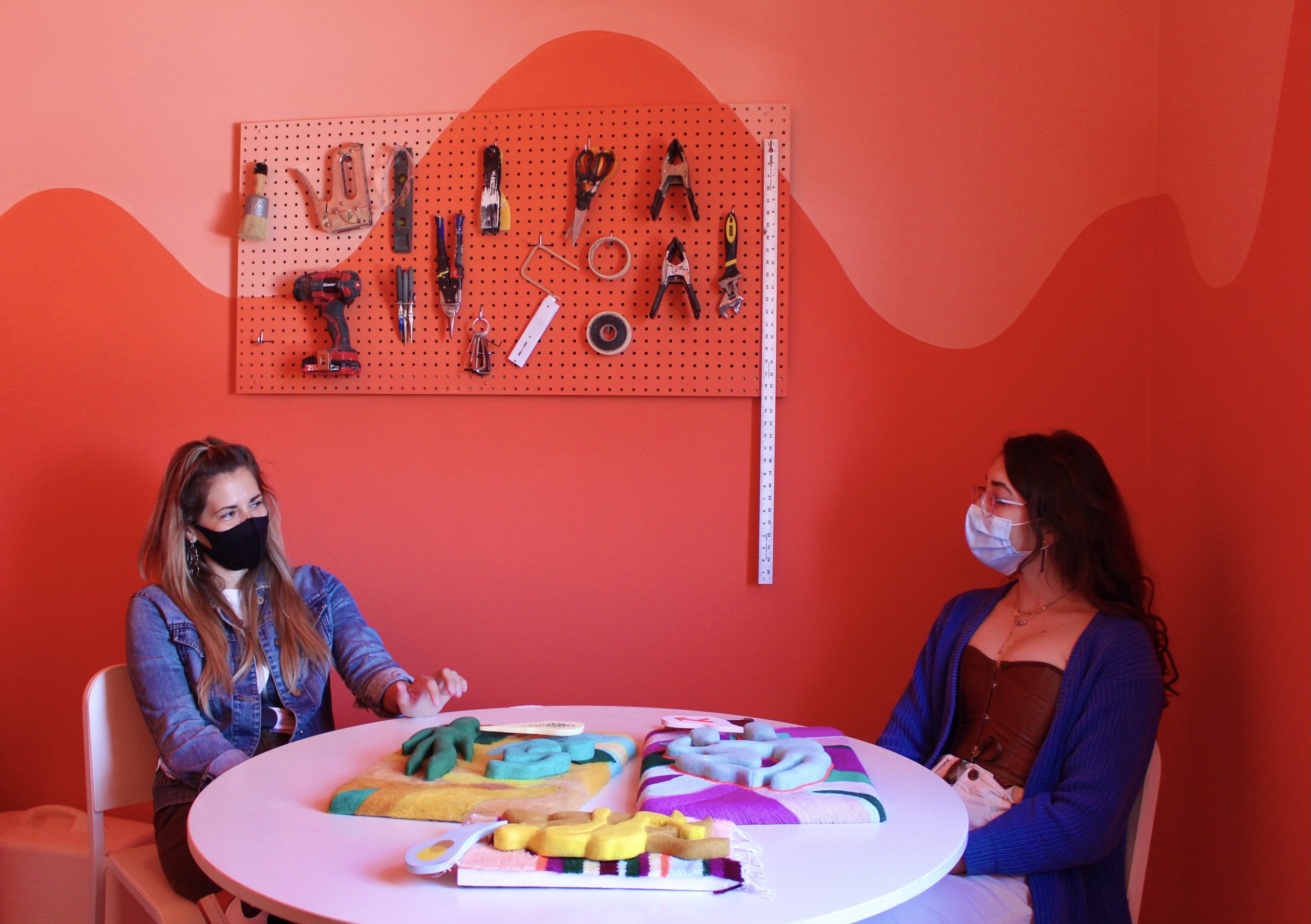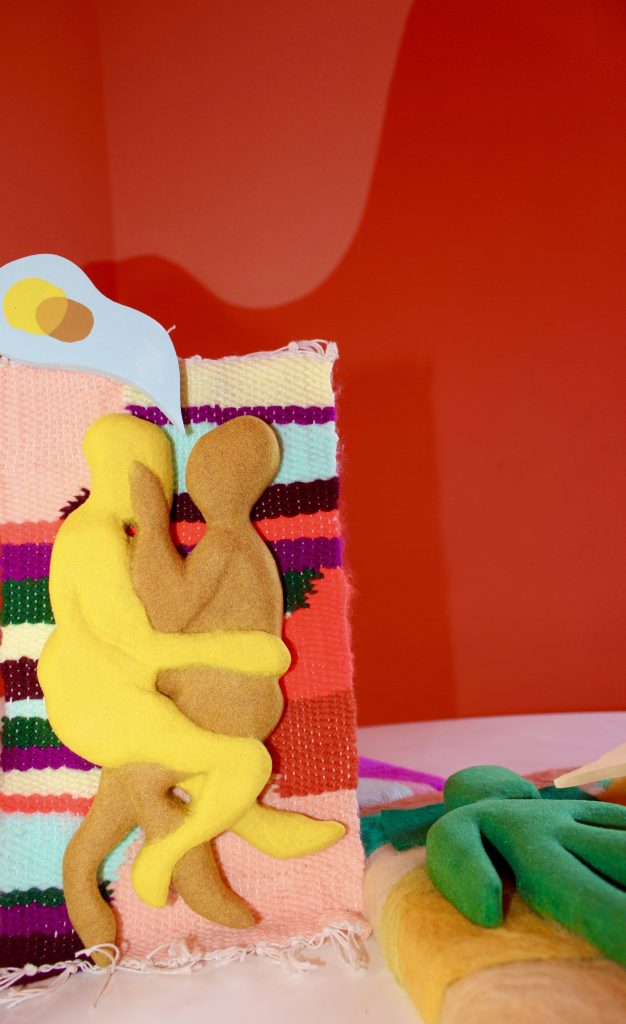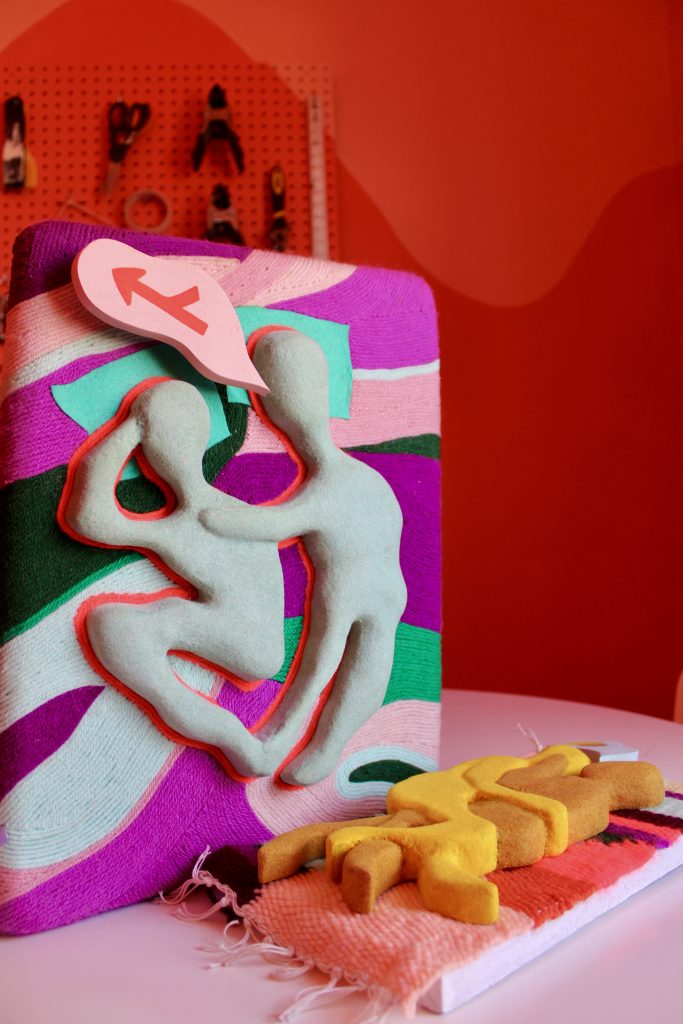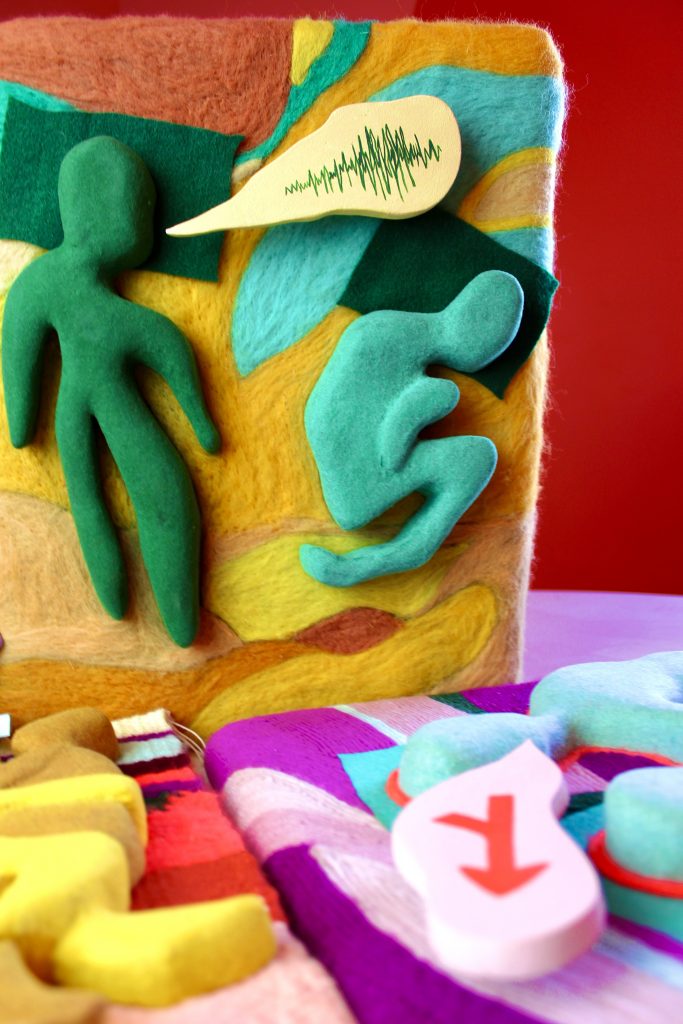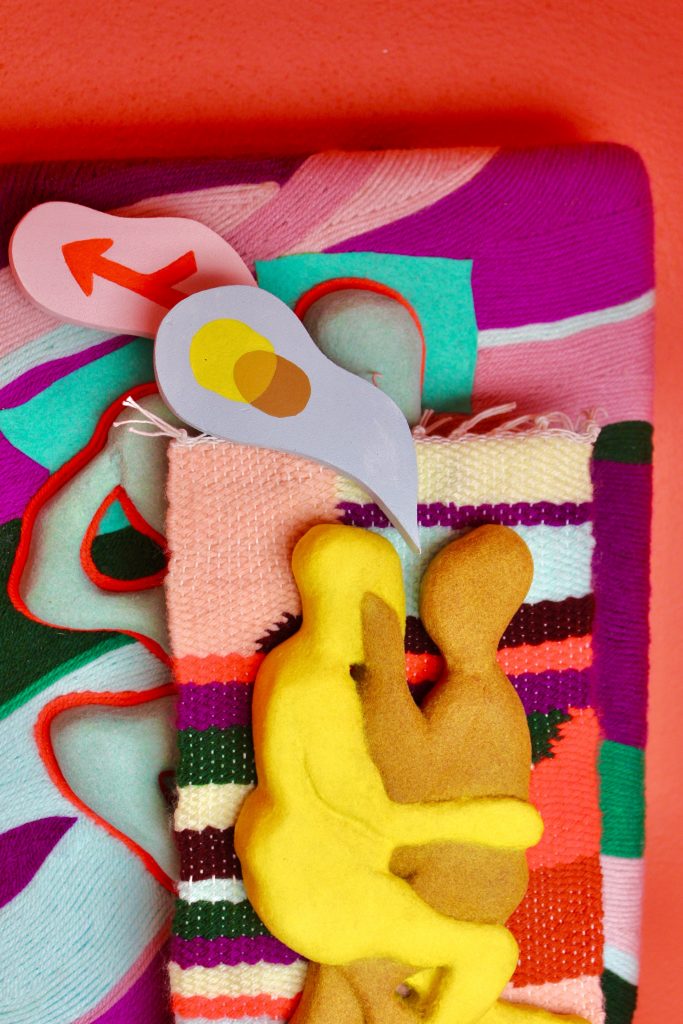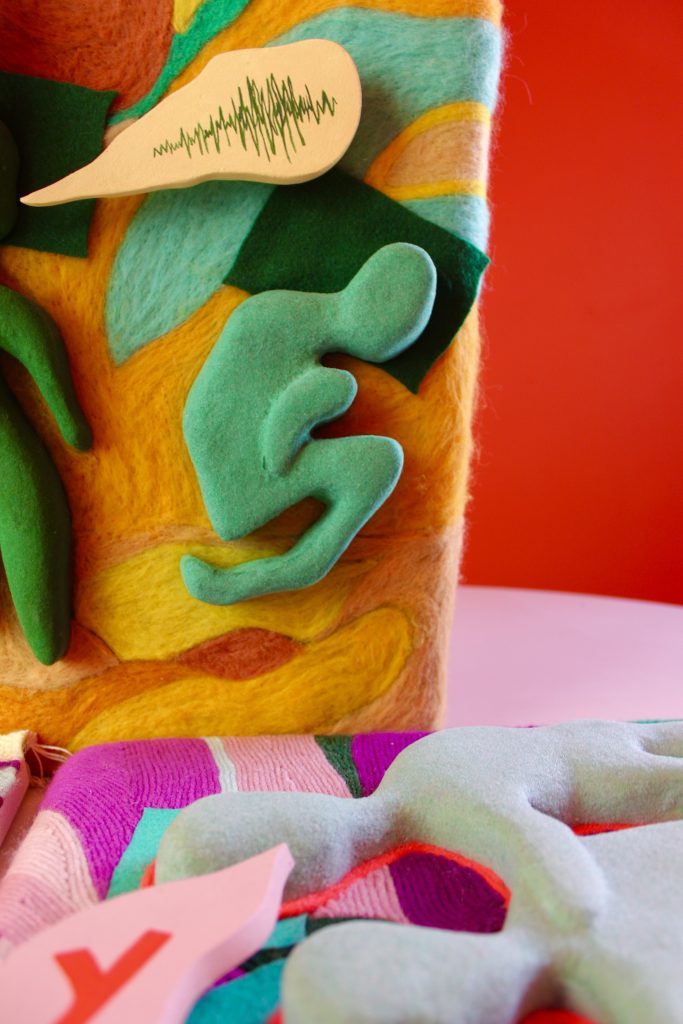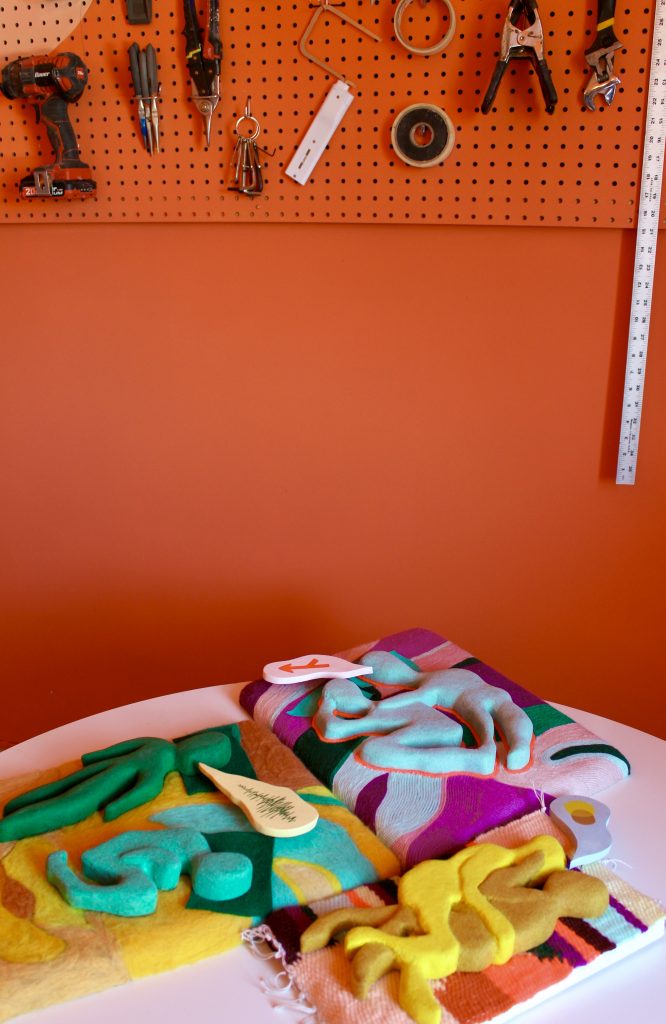Donning olive green trousers, a printed t-shirt, and a jean jacket, Jessica Lynn Hunt radiates an effortless, cool air that bodes seamlessly with her warm, welcoming personality. A multimedia artist based in St. Louis, Hunt sat down with me to discuss her childhood, current and past artwork, and artistic vision for the future. Alongside her art practice, she is the Assistant Director for the Bonsack Gallery (Ladue, MO) and a teacher at the John Burroughs School (3D Art, Sculpture 1, Sculpture 2, and Art Intensive).
I’d prepared enough questions to fill three pages and several hours, but within minutes of meeting each other, Jessica and I resolved to allow the course of our conversation to flow naturally.
I began by asking Hunt about the role of art in her childhood and later transitioned to the topic of Hunt’s artistic evolution and her present work.
JESSICA: It was definitely an evolution. I would say that growing up, I never thought of myself as the artist of the family. I like to joke that my little brother came out of the womb with a pencil in his hand. He’s very gifted. But I took my first art class in high school, and my junior year, I made a portrait for my mom of her own mother who had died at a young age. And I’m not tooting my own horn here (laughs), but when I gave it to my mom, she thought I had photocopied the photographs I’d drawn it from. There was this realization that I do have formal skill in me. I was sucked into art after that.
But when I started college, I had a sort of panic that I wasn’t creative. I hear this from my seventh graders who think that you can’t teach creativity, but you can. You can learn it. It’s a skillset, like anything else that you have to be open to. Anyway, I took a sociology class, switched my major, and that’s how I got into Sociology and Women’s Studies. After college, I moved to Boston, where I started taking a ceramics class. I also trained to become a Studio Assistant, but then finding myself back in St. Louis, I completed a post-BAC program at SIUE. I didn’t have a portfolio other than what I had done with the Ceramics class, and luckily my mentor, Thad, saw something in me and accepted me into the graduate studio after that first post-BAC year. I got my MFA when I was thirty-three, and I still feel like I’m relatively new to the art scene. Art was always present, but I didn’t have a traditional route. My last year of grad school, a position opened at John Burroughs, and one of the professors at SIUE mentioned it to me. Long answer, but that’s how I got to where I am!
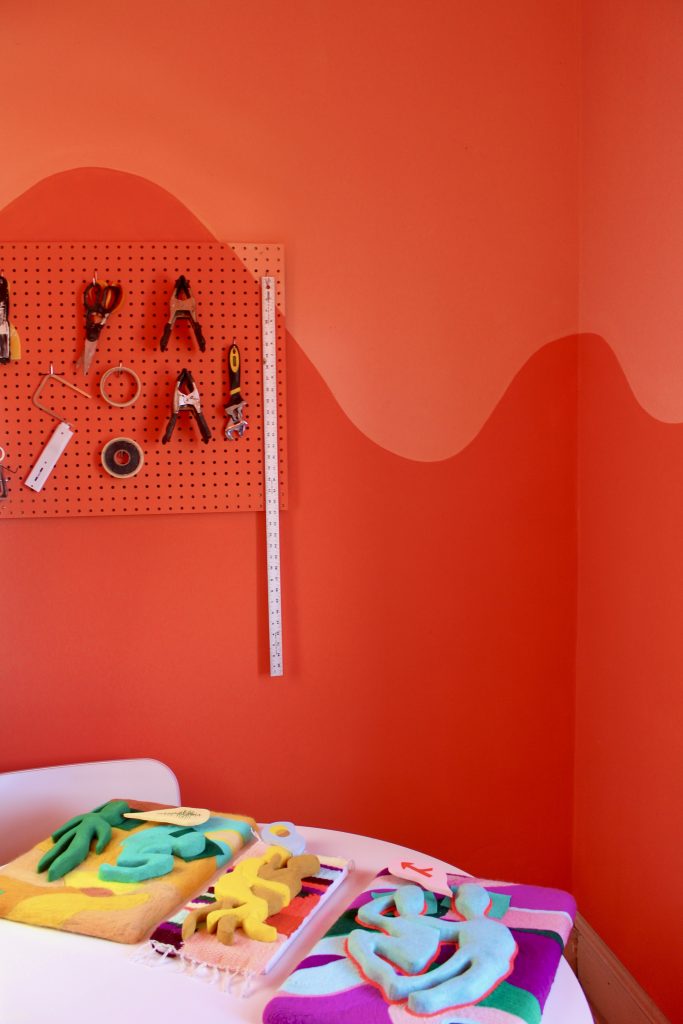
SOFIA: You mentioned something about teaching creativity, so what does that mean to you, especially in your work at John Burroughs? And do you think you’d taught creativity to yourself?
JESSICA: A lot of it is abandoning fear. I’ll give you the example of my seventh graders. They come in, and they think the right way is “perfect,” and they don’t embrace things like texture or abstract ways of thinking because they’re so scared of ruining the piece. But that’s how we get to new places! You try. I think my practice is a lot like this. It’s kind of like the wind; it’s here, it’s there and everywhere. I’m trying to learn painting, which is a tough thing to do. I must have looked at a thousand paintings just to get an idea of what I was attracted to and what I liked. But first and foremost, you have to let go to realize creativity is possible.
I think what really allowed me to open up was also a book called The Artist Way by Julia Cameron. She wrote it while teaching a workshop, which turned into the book. It’s a twelve-week course of opening yourself up to creativity. She’s really the woman who convinced me that it was possible (to abandon fear). This course had things that I wouldn’t have even thought of; you take yourself on an artist date every week by yourself or do morning pages, thirty minutes of writing every morning when you wake up. You start to find insight in that.
My body of work has changed drastically, and I feel like my first year of grad school, I was just getting my legs in the water. The third and last year, that’s when I felt that I had an idea of where I was going!
SOFIA: Speaking about how your body of work has experienced changes, I suppose this is a convenient place to segue into talking about the pandemic. Do you want to chart out how you see the timeline of your body of work and how the pandemic has produced changes there?
JESSICA: When I was taking the first Ceramics class in Boston, concept was not a thing for me. I wasn’t thinking about idea-based work, and the first year at SIUE, they really promote experimental thinking, so they want you to try everything. So, I really tried everything. I was influenced from my art history classes; I was influenced from the women’s studies program I was involved in my youth. I was just trying to navigate what ‘idea’ meant in work, so I made a lot of work that related to being a female because that’s the one place I knew where to start. In that period of time, I also had an estranged relationship with my dad, and I think that’s where my focus on relationships came to light. When I started thinking about how I could work through that complexity in my work, it was very exciting, and I realized that this is what artists do. They work through things. A lot of my work is emotionally focused and intimacy-driven.
I think a lot about how we develop empathy and compassion for people. It’s so important, but it’s something we have to learn how to do. I make a lot of work intentionally ambiguous, so somebody can come into it. If I have these two arranged in a certain way (she points to a pair of green shapes nestled together near a radiator), I’ll have people say, “that’s me” or “I relate to that person.” Or the masked people (referring to her Mask Faces series of photographs), where it’s just people in their homes, getting them comfortable, and then taking their picture halfway through routines. It’s part anthropologist, part director. Ambiguity is just a way for the viewer to put their own experiences and relationship dynamics into it and reflect. I really want people to think about those relationships and why they are the way they are.
SOFIA: I’m curious about how you think about inspiration, and how that relates to so many of your projects drawing on intimacy and relationships. There’s this popular image of the artist as someone who’s struck by it, but there’s a lot more work behind it. Are you ever working on more than one project at a time, or is there a fallow period?
JESSICA: This will also tie into how you asked about the pandemic earlier! When I think of the word ‘inspiration,’ the pandemic brings up a lot of anxiety and difficulty working through that. Whereas I think that a lot of creatives and other people I know seem to be thriving through it. There are moments where I am struck with an idea, lightning-fast, and I write it down, I draw it in my sketchbook. Sometimes it comes from a dream or an interaction, and I think it’s great, but as an artist, you can’t rely on that.
I mentioned therapy and working through complexity with another person, but I’m also an observer, and I think that really fuels my practice. I’m an extrovert, and I love being out in social spaces. The older I get, the more I like to be a fly on the wall. I love going to parties where I don’t know anybody, and I can be the person watching everyone talk to each other. There are many nights where I will go out in the Grove all by myself, and I’ll just sit there and watch how youth culture interacts. How are they dancing with each other? What are they signaling to this other person? What energy is created? Because of the pandemic, it’s been really difficult to have experiences like that.
The Bedtime Series came from the bed being this place I’ve spent so much time in and shared with another person. After The Bedtime Series, I felt a long drought that was starting to really impact me and depress me a bit, where every time I would go to the studio, I was thinking if I’m not motivated to make something idea-based, at least I’m going to make something new. I started painting, but when I got to this most recent painting, I had to sit down and think. I can’t just keep making things I don’t feel a conceptual connection towards. I drew inward and just sat and thought for a while. I think I do that a lot, where I just create when I don’t have anything on—no music, no TV—and allow myself to go as deep inside as I can.

SOFIA: Speaking more on The Bedtime Series and staying home more often, I think the home has become a fixation now. With your works of art, do you see them as having a set home? Or do you think that they’re meant to travel and move?
JESSICA: With the idea of home, I’ve been in this place of wanting to make art that people can also put in their homes. But people don’t really put a lot of sculpture in their homes, and I think it’s really hard to convince someone that that’s a thing that belongs in their living room or bedroom.
In terms of the mobility of them and where they exist, I’m more interested in making forms that can be rearranged and moved in many different ways wherever they are, which changes the energy of the piece. The clearest example I can give is if I have two forms and they’re facing each other, that means something very different than if they’re facing outward, and I love that. I love that one piece can continually change the dynamic of those forms, spark a different conversation or way of thinking. The home is such an intimate space, and the way that you curate your space and exist in it is going to be different for everybody.
SOFIA: I wanted to touch briefly on color in your pieces. How do you think about color in your pieces? Would you ever attempt something in black and white, or is that not in your frame of style?
JESSICA: Color gives me life, and I think when I’m existing in my daily life, I don’t like to stand out all that much—and maybe I’m manifesting some hidden desire to be seen in my work by having so much color—but I really want the work to be fun. I didn’t always make work that was this bright. But since I’m talking about human relationships and I think about identity so much, I do a lot of diversity, equity, and inclusivity work at Burroughs, and when you put a color palette that ranges from black to white, you’re automatically having another conversation. I would have to think about what hue of what color I’m using, and how I don’t want to speak for anyone else. Coming from a personal space is going to be the most authentic place to come from, but I’ve collected enough stories from varying identities that I also want to include everybody.
I’ve done a lot of thinking about my position as a white woman: what that means and how to make work that’s not just for white women. By using bright colors that don’t relate to skin tone—greens and blues and purples for skin tone instead of browns and peaches and tans—it just makes sense to me, and it’s exciting as an artist. With color, there’s endless possibilities and room to play. I think I’d feel very conflicted limiting my palette to black and white when I know I can speak more truthfully to a range of emotions with a variety of colors.
Play is very important for artists since creativity is an act of play. It becomes harder and harder for some artists who feel stuck in their body of work because that’s where they’ve found success. That’s where they end up staying since that’s what people have demonstrated interest in, but there’s a fear of taking risks.
SOFIA: One of our last questions, a more personal one, touches on this idea of fear. So much of our vocabulary around art wants it to be a gateway, a tunnel, a void, a simultaneous place of escape and complete immersion. How do you see your art working around fears or hopes that you have?
JESSICA: I see it all the time! With everything that I do, there’s fear and hope in that. Because I’m continually on the path for growth as an individual and in my relationships. Vulnerability is risking that fear to go out on this ledge and not being met in that same place. There’s always going to be a fear—I think some people are more comfortable with vulnerability and intimacy than others—but fear is innately going to be a part of vulnerability — it’s what makes it vulnerable! And in terms of hope, when I think about the progress I’ve made in my friendships, my familial relationships, and my romantic relationships, the hope is that that growth is visible, and with each passing year, you can look back and see that things are not as bad as they were or look at how much greater I’ve expanded my toolbelt. That’s so rewarding!
The wind blows through her airy living room, slightly rustling the masks placed on the walls or stuffed sculptures resting against the radiator. It’s hard to believe that fifty minutes have already passed, but there’s room for one more question.
SOFIA: Is there anything you wanted to be asked today that we didn’t get a chance to talk about?
JESSICA: I thought this was an interesting question: how would I characterize the intersection between existing as a gallery director, a teacher, and an artist? The demands of teaching have been so strained this year, given how we are trying to navigate teaching hybrid or through Zoom. There’s some compartmentalizing that goes on with that, but there’s also a fluidity to teaching at Burroughs and working in the gallery. The summers are really a prime time for experimenting. So far, teaching over Zoom has been a learning experience for me. I have to be in tune with how my students are and how the art world is changing.
The art world is changing, and Jessica Lynn Hunt is an arbiter of that change. We part ways smiling. Check out her work here: http://jessicalynnhunt.com/.
Words Sofia Angulo-Lopera, Jessica Lynn Hunt
Photographs Isa Zisman
Armour Magazine Season 26 — S/S 2021

